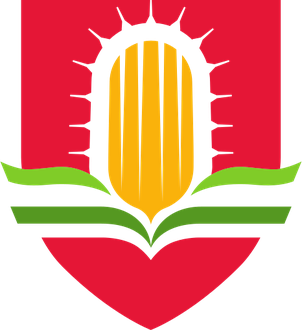Related Research Articles

Perth is the capital city of Western Australia. It is the fourth most populous city in Australia, with a population of over 2.3 million within Greater Perth as of 2023. It is part of the South West Land Division of Western Australia, with most of Perth's metropolitan area on the Swan Coastal Plain between the Indian Ocean and the Darling Scarp. The city has expanded outward from the original British settlements on the Swan River, upon which its central business district and port of Fremantle are situated.

Western Australia (WA) is the westernmost state of Australia. It is bounded by the Indian Ocean to the north and west, the Southern Ocean to the south, the Northern Territory to the north-east, and South Australia to the south-east. Western Australia is Australia's largest state, with a land area of 2,527,013 square kilometres (975,685 sq mi), and is also the second-largest subdivision of any country on Earth, surpassed only by the Sakha Republic in eastern Russia, and formerly Northwest Territories in Canada, before the creation of Nunavut. It is also the largest proper subnational entity, being a state rather than a territory or an autonomous region.

Murdoch University is a public university in Perth, Western Australia, with campuses also in Singapore and Dubai. It began operations as the state's second university on 25 July 1973, and accepted its first undergraduate students in 1975. Its name is taken from Walter Murdoch, the Founding Professor of English and former Chancellor of the University of Western Australia.

Curtin University is an Australian public research university based in Bentley, Perth, Western Australia. It is named after John Curtin, Prime Minister of Australia from 1941 to 1945, and is Western Australia's largest university, with 58,607 students in 2022.
The Pilbara is a large, dry, sparsely populated region in the north of Western Australia. It is known for its Aboriginal people; its ancient landscapes; the prevailing red earth; and its vast mineral deposits, in particular iron ore. It is also a global biodiversity hotspot for subterranean fauna.

Cottesloe is a western suburb of Perth, Western Australia, within the Town of Cottesloe. Cottesloe was named for Thomas Fremantle, 1st Baron Cottesloe, a prominent Tory politician and the brother of Admiral Sir Charles Fremantle for whom the city of Fremantle was named. The nearby suburb of Swanbourne was named for the Fremantle family seat, Swanbourne House, in Swanbourne, Buckinghamshire.

WAY 79, also referred to as WAY '79 and WAY 1979, was the official 1979 sesquicentennial celebration of the European colonisation of Western Australia.

The Ningaloo Coast is a World Heritage Site located in the north west coastal region of Western Australia. The 705,015-hectare (1,742,130-acre) heritage-listed area is located approximately 1,200 kilometres (750 mi) north of Perth, along the East Indian Ocean. The distinctive Ningaloo Reef that fringes the Ningaloo Coast is 260 kilometres (160 mi) long and is Australia's largest fringing coral reef and the only large reef positioned very close to a landmass. The Muiron Islands and Cape Farquhar are within this coastal zone.
Gordon Stephenson was a British-born town planner and architect. He is best known for his role in shaping the modern growth and development of Perth, Western Australia.

Curtin University Malaysia is the Malaysian campus of Curtin University, a public university based in Australia. It is the university's largest campus outside of Australia with a total area of 1,200-hectare (3,000-acre) comprising academic and residential blocks. It offers undergraduate and postgraduate programs in various fields of commerce, engineering, computational sciences, humanities and health sciences. It also offers foundational courses and a Doctor of Philosophy (PhD) among other higher degree by research programs. It is named after John Curtin, a prominent Prime Minister of Australia during World War II from 1941 to 1945.
John Hartley, , FAHA,, FLSW, ICA Fellow, is an Australian academic and a John Curtin Distinguished Emeritus Professor. He was formerly Professor of Cultural Science and the Director of the Centre for Culture and Technology (CCAT) at Curtin University in Western Australia, and Professor of Journalism, Media and Cultural Studies at Cardiff University. He has published over twenty books about communication, journalism, media and cultural studies, many of which have been translated into other languages. Hartley is an adjunct professor with CCAT.

The University of Western Australia (UWA) Library is a library system consisting of five library sites on and near the campus. The libraries are known to support a wide range or services and facilities, including teaching. learning, research and IT support, and learning spaces.

Central Institute of Technology was a Technical and Further Education (TAFE) institution based in Perth, Western Australia until 2016, at which point it became a part of North Metropolitan TAFE. It was the equal oldest post-secondary educational institution in Western Australia and the largest TAFE institution in Perth.
John Robert de Laeter, AO, FTSE, FAIP was an Australian scientist with a distinguished career across several fields in nuclear physics, cosmochemistry, geochronology, isotope geochemistry. He was also a prominent administrator and promoter who oversaw the establishment of several scientific research and education centres in Western Australia.
Malcolm John Bryce was an Australian politician, who served as a Labor Party member of the Legislative Assembly of Western Australia from 1971 to 1988, representing the seat of Ascot. He was deputy leader of the Labor Party from 1977 to 1980 and from 1981 to 1988, and served as deputy premier under Brian Burke.
The Australian Association for Maritime History (AAMH) is an Australian maritime history organisation. It publishes a journal, a newsletter and organises conferences.
The Eremaean province is a botanical region in Western Australia, characterised by a desert climate. It is sometimes referred to as the dry and arid inland or interior region of Western Australia It is one of John Stanley Beard's phytogeographic regions of WA, based on climate and types of vegetation who, in "Plant Life of Western Australia" (p. 29-37) gives a short history of the various mappings.
Mary Moore is a Western Australian artist. Her paintings are inspired by the day-to-day existence of her family, creating works that speak of optimism and confidence about life. She makes spaces that she charges with her meanings so that people who look at them can become evolved and make up their own stories.
The National Premier Leagues WA Women, also known as the NPL WA Women, is a soccer competition in Western Australia. The competition is conducted by Football West, the organising body in Western Australia. The league is a subdivision of the second tier National Premier Leagues Women's structure, which sits below the national A-League Women, it is the highest tier of local women's competition in Western Australia. The league was founded in 2020 in Western Australia, several years behind equivalent leagues in other states.
Erica Reid Underwood was an Australian expert in child psychology who became a radio broadcaster. She was recognised with an MBE for her community work.
References
- Kerr, Alex, editor (1981) The Indian Ocean region : resources and development Nedlands : University of Western Australia Press. ISBN 0-85564-186-X Proceedings of the International Conference on Indian Ocean Studies. Section 2.